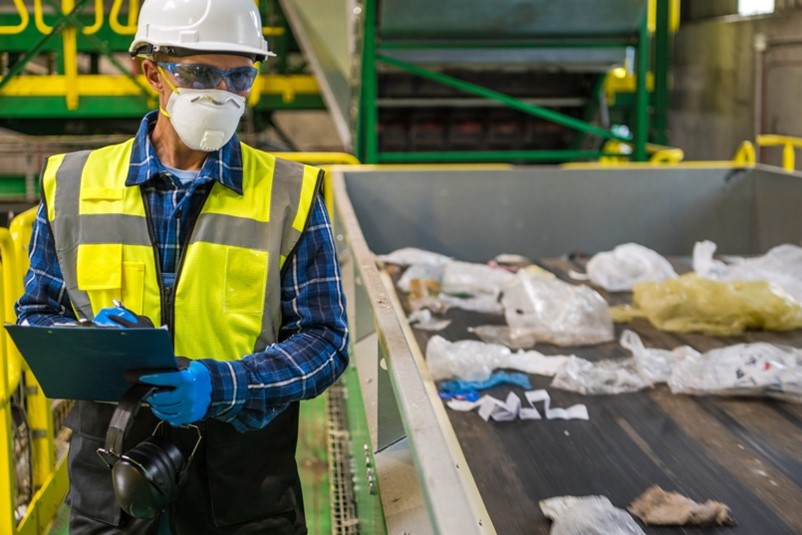A circular economy for flexible packaging requires more end markets for recycled materials along with value chains that prioritise consistent quality of post-consumer recyclate, according to James Marshall, CEFLEX’s end market expert.
Why do we need more information about the end markets for recycled flexible packaging?
Without the pull created by sustainable end markets, there is no circular economy. It’s vital to know which sectors are driving demand for recycled materials to avoid putting all our eggs in one basket. This needs to be underpinned by a demand-driven value chain that considers the quality of different post-consumer recyclate (PCR) – recycled plastics available to be re-processed into new products.
Producing PCR of a range of different qualities that match the needs of the different end markets is the optimum way to increase the amount of recycled materials used. Everything is about aligning and delivering on quality where market demand exists across different sectors.

James Marshall, CEFLEX’s end market expert
The importance and urgency of achieving this transformation is underlined by packaging legislation from the European Union – requiring flexible plastic packaging to incorporate 35% recycled content in non-contact sensitive plastic packaging and 10% in contact sensitive applications by 2030, with targets raising to 65% and 25% respectively by 2040.
You lead CEFLEX’s end markets analysis, which is identifying promising markets for recycled flexible packaging materials. Why conduct this work and what does it reveal?
Putting recycled plastics to better use in more products is a major challenge. The entire value chain must collaborate and innovate together to ensure recyclability, recycling at scale and recycled materials being used again is a connected – and valuable – chain of processes.
By working with our stakeholders and beyond we help define a ‘north star’ around which to build understanding, alignment and action. For example, our data and analysis are a vital component of CEFLEX’s recycling strategy – recommending what recycling capacities and technologies are required to deliver legislative targets and the circular economy.
Current focus is on post-consumer recyclate material from a mechanical recycling process as we acknowledge this has the lowest environmental impact – and that targeting meeting demand for recycled materials from the least demanding applications first potentially gives the fastest gains.
Our analysis highlights a couple of major opportunities here. Firstly, to strengthen and expand markets for mechanically recycled polyethylene (rPE) back into flexible applications and some potential use in rigid and ‘semi-flexible’ products from fibre and cable extrusion. And secondly, a strong potential for polypropylene recyclate (rPP), with clear opportunities into rigid and other extrusion products and possibilities for mechanical PCR into flexible applications, such as labels, tapes and textile packaging.
We need to continue improving packaging design and optimising existing mechanical recycling technologies to deliver better yields and quality at a greater scale to capitalise on these opportunities. Both areas that link nicely to other aspects of CEFLEX’s work.
A defining challenge and opportunity to further incorporating recycled content however is the prevalence of food or contact sensitive applications in plastic packaging.
For the purposes of our end markets work today, it is assumed that these contact sensitive applications cannot use a recyclate derived from mechanical recycling. For the foreseeable future, chemical recycling will be needed to address contact sensitive packaging, particularly food contact applications, with advanced mechanical and physical recycling processes possibly able to serve some non-food contact sensitive and high technical specification applications with rPE and rPP, such as automotive for example.
 How does your analysis identify the different markets to explore?
How does your analysis identify the different markets to explore?
We have taken a lot of raw data about the use of virgin polymer demand – so where in Europe are businesses using polyethylene and polypropylene? What extrusion process is being used? And what’s the final product, application and sector? We then analysed if a product category is contact or non-contact sensitive, flexible or rigid, packaging or non-packaging to get an idea to where the highest potential for boosting recycled content exists.
To support and decode this data, we are conducting interviews with key CEFLEX stakeholders, and beyond, from every part of the value chain, such as recyclers, converters, brand owners, end users and Extended Producer Responsibility (EPR) schemes. We are also speaking to a range of businesses about their needs and product requirements, which in-turn helps our analysis to identify suitable end markets for PCR. With this information, a range of market opportunities using recycled flexible packaging can be clearly identified and evaluated.
What are some of the best short-term opportunities for increasing recycled content revealed by CEFLEX’s work?
The ‘low hanging fruit’ are the sectors that are already using recycled content and could potentially use more. Existing conventional mechanical recycling infrastructure is producing PCR suitable for products as varied as refuse sacks, shrink wrap, heavy duty sacks, dampproof membranes, irrigation pipes and parking grids, depending on the household or commercial source of the waste feedstock. In that sense, to take a market currently using 48% PCR and raise it up to 60-70% PCR might give sizable environmental gains. However, we need to understand and overcome reasons why they are not currently using more recyclate in their products, which could be lack of availability, consistency of supply and price or technical barriers.
What drivers can help connect market demand and supply for recycled flexible packaging?
Consistency of recyclate quality is a key driving force for scaling adoption because buyers and businesses need to be confident that recycled material is going to perform.
Proving legislation is also a critical enabler of the circular economy, the EU Packaging and Packaging Waste Regulation is going to have a huge impact in driving investment, as well as increasing recycled content demand.
What would also help in the future is to have more sector specific requirements. At the moment, it is only packaging and automotive sectors that have recycled content regulations, while other sectors are voluntarily improving their recycled content usage due to internal company drivers or consumer demand.
CEFLEX is continuing to seek more engagement with organisations and experts from across the value chain to continue developing their end market analysis:
- Reviewing data assumptions (e.g. (non) contact sensitive and average recycled content)
- Aiding understanding of qualities and sources of mechanical PCR used in various applications
- Building more understanding of non-packaging sector-specific recycled content targets not being driven by packaging regulation (i.e., automotive, construction…)
Contact James Marshall, james@ceflex.eu, to participate and exchange on ahead-of-time insights
